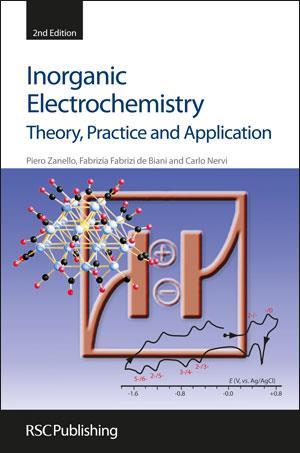Piero Zanello, Fabrizia Fabrizi de Biani and Carlo Nervi
RSC Publishing
2012 | 700pp | £99.99 (HB)
ISBN 9781849730716

At 700 pages, and a title of Inorganic electrochemistry, one might expect a substantive work covering every aspect of inorganic electrochemistry. Yet the preface hides a warning: the emphasis should be on the word ‘inorganic’ and ‘pure electrochemists might disapprove of some oversimplifications’. Thus the focus is on enabling inorganic chemists to understand more about the redox processes associated with transition metal complexes.
The book is structured in three parts: three chapters give an introduction to the basics of electrochemistry, one chapter concerns practical aspects (ie choice of cells, electrodes or electrolytes) and the final 11 chapters treat the redox chemistry of various classes of transition metal compounds, from metallocenes, through to clusters and proteins. These chapters extensively, yet clearly, review the literature in the area and will be of use to postgraduate researchers.
The book finishes with a chapter on spectroelectrochemistry and a comparatively short chapter on electrogenerated chemiluminescence, both of which are new to the second edition. The inclusion of these is welcome and broadens the scope of the book; however, a reader may be forgiven for feeling that they were added as afterthoughts. For example, the spectroelectrochemistry chapter would have been better placed closer to the Practical aspects section.
The main sections of the book, which predominantly report cyclic voltammetry data, would have been enhanced by the inclusion of more examples of spectroelectrochemical characterisation, particularly given the breadth implied in the title. Similarly, I would have expected to have seen more mention of electrocatalysis, electrochromic materials and metal oxides, particularly with respect to photovoltaics or photoelectrochemistry. In addition, a reader might query the quality of some of the images presented, given the price of the book, but this is a minor objection.
The book succeeds in doing exactly what the authors intend; that is to provide a useful guide to researchers wishing to investigate redox processes of compounds containing transition metals and to allow inorganic chemists to avoid common pitfalls when doing so. As such, it will be a welcome reference for researchers in this field.
Purchase this book direct from the RSC. Members will receive a 35% discount.












No comments yet